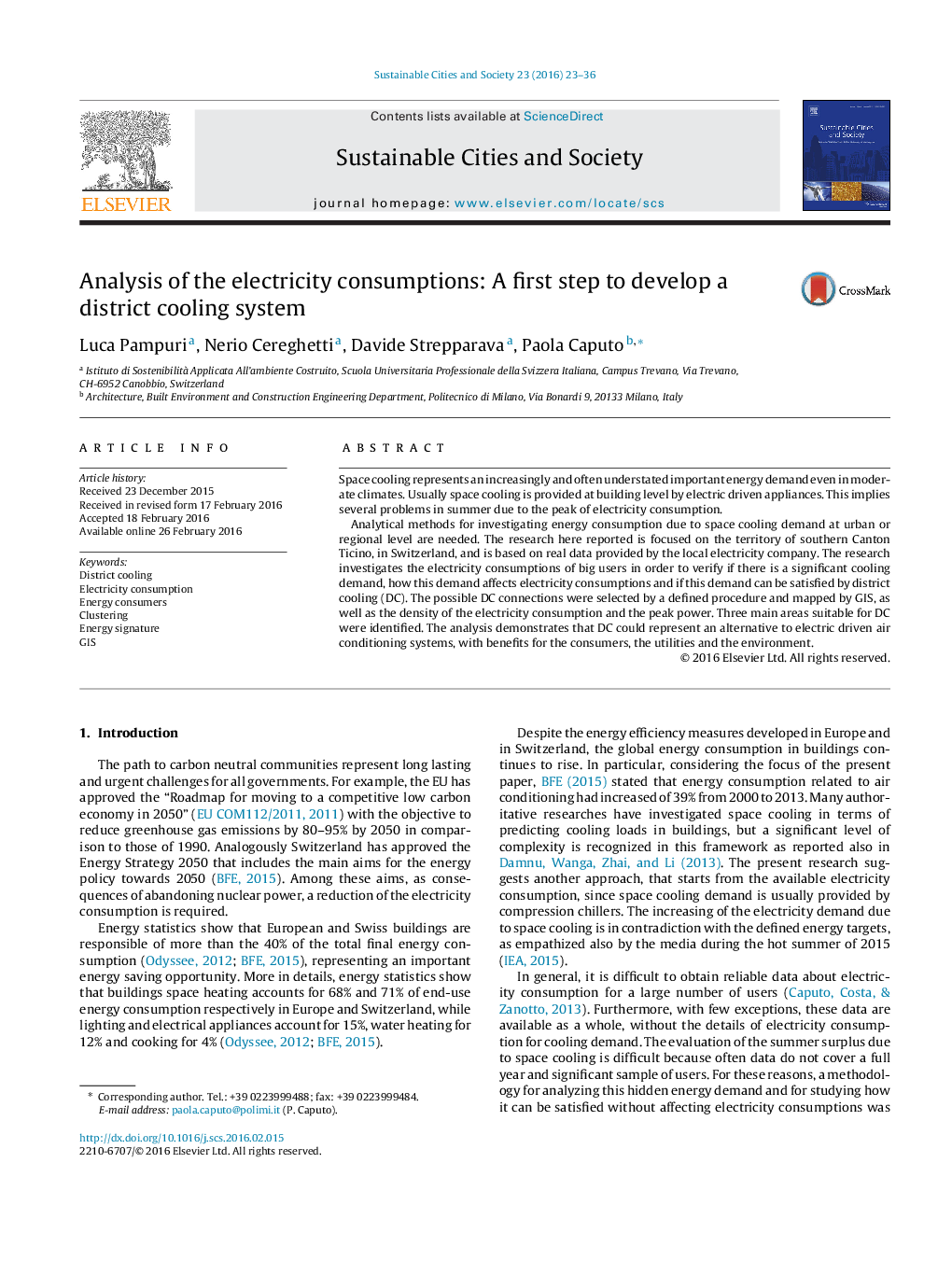| کد مقاله | کد نشریه | سال انتشار | مقاله انگلیسی | نسخه تمام متن |
|---|---|---|---|---|
| 308043 | 513518 | 2016 | 14 صفحه PDF | دانلود رایگان |
• The electricity consumptions of big users in southern Canton Ticino were analyzed.
• A procedure for selecting space cooling users and their location was accomplished.
• A method to outline electricity consumptions and powers for space cooling was developed.
• Their densities were calculated and mapped by GIS.
• Three main areas suitable for district cooling were identified and analyzed.
Space cooling represents an increasingly and often understated important energy demand even in moderate climates. Usually space cooling is provided at building level by electric driven appliances. This implies several problems in summer due to the peak of electricity consumption.Analytical methods for investigating energy consumption due to space cooling demand at urban or regional level are needed. The research here reported is focused on the territory of southern Canton Ticino, in Switzerland, and is based on real data provided by the local electricity company. The research investigates the electricity consumptions of big users in order to verify if there is a significant cooling demand, how this demand affects electricity consumptions and if this demand can be satisfied by district cooling (DC). The possible DC connections were selected by a defined procedure and mapped by GIS, as well as the density of the electricity consumption and the peak power. Three main areas suitable for DC were identified. The analysis demonstrates that DC could represent an alternative to electric driven air conditioning systems, with benefits for the consumers, the utilities and the environment.
Journal: Sustainable Cities and Society - Volume 23, May 2016, Pages 23–36
